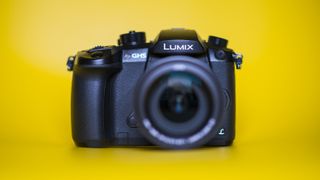What camera should I buy? Here is our step-by-step guide
From simple point-and-shoot compacts to full-frame DSLRs, we explain the differences

Video-enabled DSLRs have replaced pro camcorders for many videographers, but it's mirrorless cameras which are now driving the technology forward.
Photography isn't just about still images any more. Traditionally, video has been seen as a completely separate subject with a different set of skills, but that's changing – and fast. It's as easy to shoot a video on your smartphone as it is to take a still, and almost all compact system cameras and DSLRs are capable of professional quality video that makes a dedicated camcorder unnecessary.
It all depends on what you want to shoot and what you want to do with it afterwards. If you want to share movies with your friends, a smartphone is ideal and can deliver surprising quality.
Phones aren't built to survive the rough and tumble of extreme sports, of course, but action cams are, and many TV companies use regular GoPro-style cameras to capture footage they could never have recorded with a conventional camera.
If you need to shoot commercial-quality video for your own projects or paying clients, both DSLRs and mirrorless cameras can do the job. DSLRs were the first to bring pro-quality movie modes and are still the favorites amongst pros, but mirrorless cameras are catching up and have key advantages; notably full-time live view with fast and smooth autofocus.

And it's mirrorless cameras which are at the forefront of 4K video. Panasonic is pushing the idea of stills-from-movies with the likes of the GH4, and the ability to capture high-quality 8-megapixel stills at 30 frames per second as a by-product of the 4K video capability in its latest mirrorless cameras.
If you're choosing a camera for video, the normal rules about sensor size don't apply because even 4K video is at a lower resolution that still images. The key for video is processing power and camera design.
Get daily insight, inspiration and deals in your inbox
Sign up for breaking news, reviews, opinion, top tech deals, and more.
Right now, DSLRs are a good, conservative choice for movie makers shooting full HD, but mirrorless compact system cameras are the ones pushing back the boundaries of video, including 4K.
Our pick... Panasonic Lumix GH5

It’s hard to know where to start with the GH5. Rather than using a cropped area of the sensor when shooting 4K as was the case with the GH4, the GH5 uses the entire width of the chip and then downsamples the footage in-camera. This also means that framing won’t be cropped, and you’ll be able to use your lenses as if you’re shooting stills. Currently the Lumix GH5 allows you to shoot Cinema 4K (4096 x 2160) at 60p with a bit rate of 150Mbps, while Full HD video is obviously also possible, up to a very impressive 180p. That's not all, as the GH5 offers color subsampling at 4:2:2 and a color depth of 10-bit, delivering greater color information and richer graduations. The GH5 also offers live output to external recorders such as Apple ProRes via HDMI, as well as simultaneous internal recording. That's certainly a comprehensive video spec, but Panasonic is also planning to introduce a number of firmware updates over the coming months to bolster the GH5's recording capabilities even further.
Read the full review: Panasonic Lumix GH5
Current page: Step 8: Making movies - a sideways step
Prev Page Step 7: Turning pro with a full-frame camera